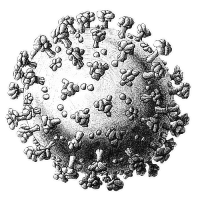In 2002, the VII group published the first shotgun metagenome. This work showed that viruses are the most diverse and uncharacterized life forms on the planet. Most of these viruses are phage, which infect bacteria. Using this viromic approach, members of the VII have studied viruses in all of the major biomes on the planet. One product from this work has is the first world field guild to viruses (Life in Our Phage World!).
Building on the early work in viromics, the VII group has shown that viruses, particularly the phage, are the most diverse and abundant members of the human body. These viruses are major players in human health. Phage associate with mucosal surfaces in a way that permits them to attack and kill incoming bacteria. This symbiotic relationship is present in all animals and this phage-based immune system maybe the first adaptive immunity system.
Cystic Fibrosis (CF) is a human genetic disease that leads microbial colonization of the lungs. The VII group has worked out methods to characterize both the viruses and bacteria in the lungs of CF patients and rapidly get the data to doctors. We are now designing personalized and novel treatments regimes for CF patients.
When the first SARS emerged and started spreading in late 2002, VII members helped adapt viromics to detect novel pathogens. This work led to the first viromic analyses of human blood and stool. Members of the VII are using these methods to find new viral pathogens in humans, animals and plants.
To see our latest work on the second SARS virus please visit covidsample.org
Because they are the most abundant life forms on the planet, viruses have enormous impacts on the environment. The VII group are leaders in determining how viruses influence ecosystem health in environments ranging from coral reefs to kelp forests to deep mines.
Historically, phages and other viruses have been a fountain of tools for biotechnology. The viromics work has shown that most of the genes in the virosphere are unknowns that hold great potential for new enzymes and biological structures. VII members have developed new tools mine these unknown genes for biotech purposes.
The mission of the Computational Science Research Center (CSRC), located at San Diego State University, is to promote development and advancement of the interdisciplinary subject of computational science. This is accomplished by fostering research, developing educational programs, and promoting industrial interaction, outreach, and partnership activities.
The CSRC provides an excellent environment for scientific research at SDSU. The center facilitates the interaction between applied mathematics, computer science, and the sciences by providing the necessary infrastructure for productive research efforts.
Real world applications are the focus of the projects undertaken by the faculty and students of the center. Such projects provide a significant educational opportunity for our students to hone their industrially relevant computational skills.

Your generous contribution will help support the viral ecology and personalized medicine research efforts at San Diego State University.
Send Your Gift